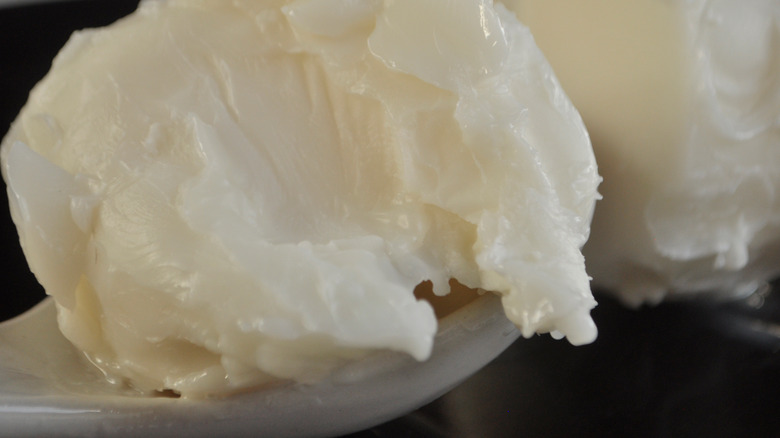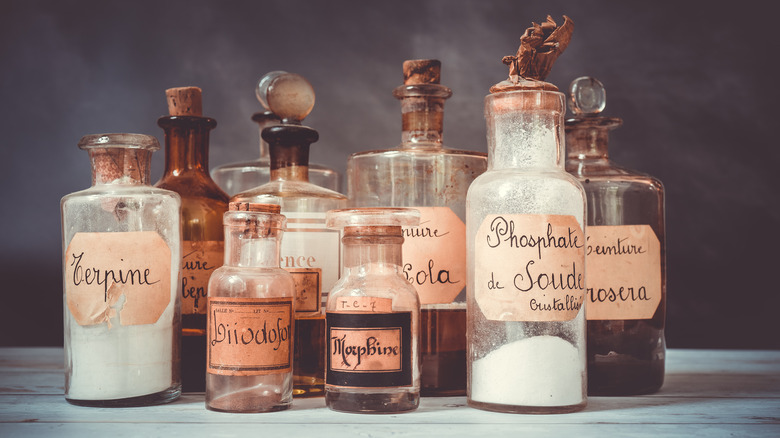The Surprising Way Human Fat Was Once Used As Medicine
The history of medicine is filled with shocking, off-base, and sometimes disgusting techniques used by medical practitioners in attempts to heal the human body. Many people are familiar with the uses of animal products for medicinal purposes, ranging from the use of leeches, which began in ancient Egypt and carries on today in some specific cases, per Healthline, to the late-19th century trend of sitting inside whale carcasses to relieve the pains of rheumatoid arthritis. The use of parts of the human body as medicine, however, is a little more obscure, and like a lot of medical history, the ethics behind such practices are questionable, to say the least.
Per The Atlantic, which published an excerpt from the 2019 book "Fat: A Cultural History of the Stuff of Life" by Christopher E. Forth, in 16th and 17th century Europe, there was a particular interest in using human fat medicinally. Physician Andreas Vesalius once instructed people who were boiling bones in order to prepare them for studying to save the layer of fat "for the benefit of the masses" who were thought to be able to use it to fade scars as well as help nerves and tendons grow. At the time, human fat was such a desirable ingredient for use in healing wounds that after a 1601 battle during the Siege of Ostend on the Belgian coast, Dutch surgeons made their way onto the battleground to harvest bags of fat, probably intending to use the fat to treat the bloodied survivors.
Human fat was used to heal all sorts of maladies
Another shocking source of human fat, per The Atlantic, was the bodies of executed criminals. Known as "poor sinner's fat," the article notes that executioners in Munich, Germany had a booming trade in both creating homemade remedies for sprains, broken bones, and arthritis, painkillers for sciatica or rheumatism, and treatment for hemorrhoids using the sweat of the deceased as well as selling rendered human fat to physicians. In a Smithsonian Magazine article, Richard Sugg, author of the 2011 book "Mummies, Cannibals, and Vampires: the History of Corpse Medicine from the Renaissance to the Victorians," noted that "The executioner was considered a big healer in Germanic countries. He was a social leper with almost magical powers." Other cannibalistic medicinal practices popular in the 16th and 17th centuries included the use of Egyptian mummies' remains in tinctures intended to stop internal bleeding and powders made from skulls used to treat headaches and apoplexy.
Smithsonian Magazine notes that the practice of using human fat, bones, and blood to treat medical problems dwindled in the 18th century as scientific discoveries and knowledge increased. However, according to the 1922 article "Adeps Hominus: A Relic of Prehistoric Therapy" written by Dr. M.A. Von Andel and published in The American Journal of Pharmacy, ointments known as "Hangman's Salve" or "Poor Sinner's Fat" reported to contain human fat "still enjoys a certain vogue as an application for dislocations or lameness" in the Netherlands. The author then points out that as capital punishment had been illegal there for 70 years as of 1922, the likelihood of the salve containing actual human fat at that point was very, well, slim.

